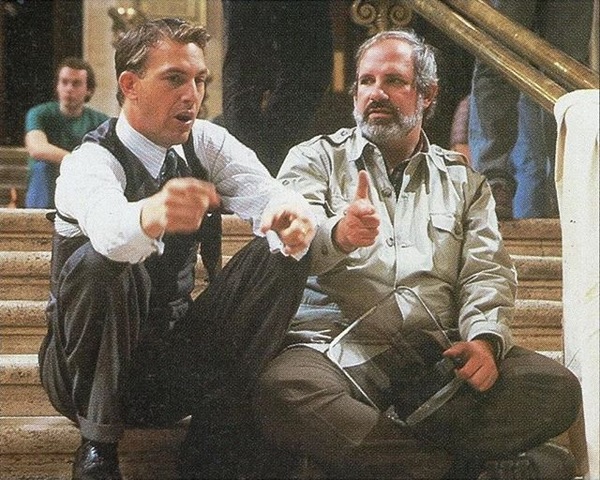"A FILM MADE BY THE RIGHT PEOPLE AT THE RIGHT TIME"

At A Fistful of Film, David Alkhed writes about The Untouchables:
When I was young, my brother and I were introduced to many films by our parents. It was mostly movies from their youth, like The Blues Brothers and the Indiana Jones series. Some of these films you will notice do not exactly feel suitable for child’s viewing. One such film was Brian De Palma’s 1987 crime classic The Untouchables.Right off the bat (pun intended), the film felt distinct with its title sequence, where the long shadows remind one of bars from a prison cell, supported by Ennio Morricone’s tense and foreboding score. Then came the way the film was shot, the God’s eye view overlooking Al Capone now etched into my memory forever. What I remembered most though, was the violence. It was shocking as a child to see a kid get blown up in such a matter-of-fact way in only the second scene of the film. Another memorable scene came in the form of Al Capone bashing one of his subordinates to death with the aforementioned baseball bat. The image of the aftermath, the pool of blood surrounding the dead man’s head stayed with me for a long time, even as my parents covered my eyes during it. As you can understand, the film made quite an impression on me, but even greater in retrospect as it was most likely the work that introduced me to Brian De Palma’s filmography.
The story of The Untouchables is a fairly simple one. There is a basis in fact, though one needs not concern themselves with the history behind the real-life characters since the screenplay, written by famed Chicago playwright David Mamet, is mostly a work of fiction. The Untouchables takes place in Chicago during the year 1930, when Prohibition was in practice and usurped by ruthless gangsters who ruled the city. The person truly in charge was Alphonse “Al” Capone, portrayed by Robert De Niro. Touting himself as an innocent businessman, Capone reigned with terror and violence, a point the film makes very early in on. Assigned to stop him is Treasury Agent Elliot Ness, played by Kevin Costner in a star-making performance. Unlike his bought-out contemporaries, Ness believes in justice and aims to bring Capone down, no matter the costs. However, there is little he can do as a majority of his partners in the police department are in the pocket of Capone himself. That’s when he hatches the plan to form a small unit of handpicked cops, cops who cannot be bought by a cheap bribe, cops who are “untouchable.”
The first to be recruited is veteran Irish cop Jim Malone (Sean Connery in his Oscar-winning performance). Through Malone, Ness learns the “Chicago way,” using the same tactics as the crooks to put them behind bars. The other two recruits are both new to the field in their own way: marksman George Stone (Andy Garcia) proves his worth to the other members, both as an Italian-American and as a dedicated officer of the law. Fellow Treasury agent Oscar Wallace (Charles Martin Smith) is formally an accountant, but inexperienced when it comes to field action. However, it’s his knowledge of accounts and bookkeeping that helps bring the most crucial piece of evidence against Capone: income tax evasion.
To me, The Untouchables feels like a perfect storm, a film made by the right people at the right time. By the time he agreed to direct the film, De Palma had almost thirty years of filmmaking experience to guide him, and had mastered the art of visual storytelling, as seen in such brilliant films as Sisters, Carrie, and Blow Out. I think his style brings a freshness to the period gangster film that would otherwise feel rather quaint at this point. For his stab at the genre, De Palma pulls no punches and brings all his cinematic tricks: long takes, unusual camera angles, split diopters, steadicam, POV-shots; all in the name of Hitchcockian levels of suspense.
He also brings a grand, operatic sense of scope to the film that feels at times like a perfect blend between the majesty of David Lean with the American mythology of John Ford. And of course, we cannot discuss The Untouchables and its relationship to classic and foundational cinema without mentioning the train station shootout, an outright salute to the Odessa Step sequence from Sergei Eisenstein’s Battleship Potemkin. A superb sequence and a perfect filmmaking lesson in building tension, establishing geography and dramatic payoff, made even more impressive when one realizes it was added fairly late in the production process as a replacement to a more logistically elaborate train chase.
Read the rest at A Fistful of Film



